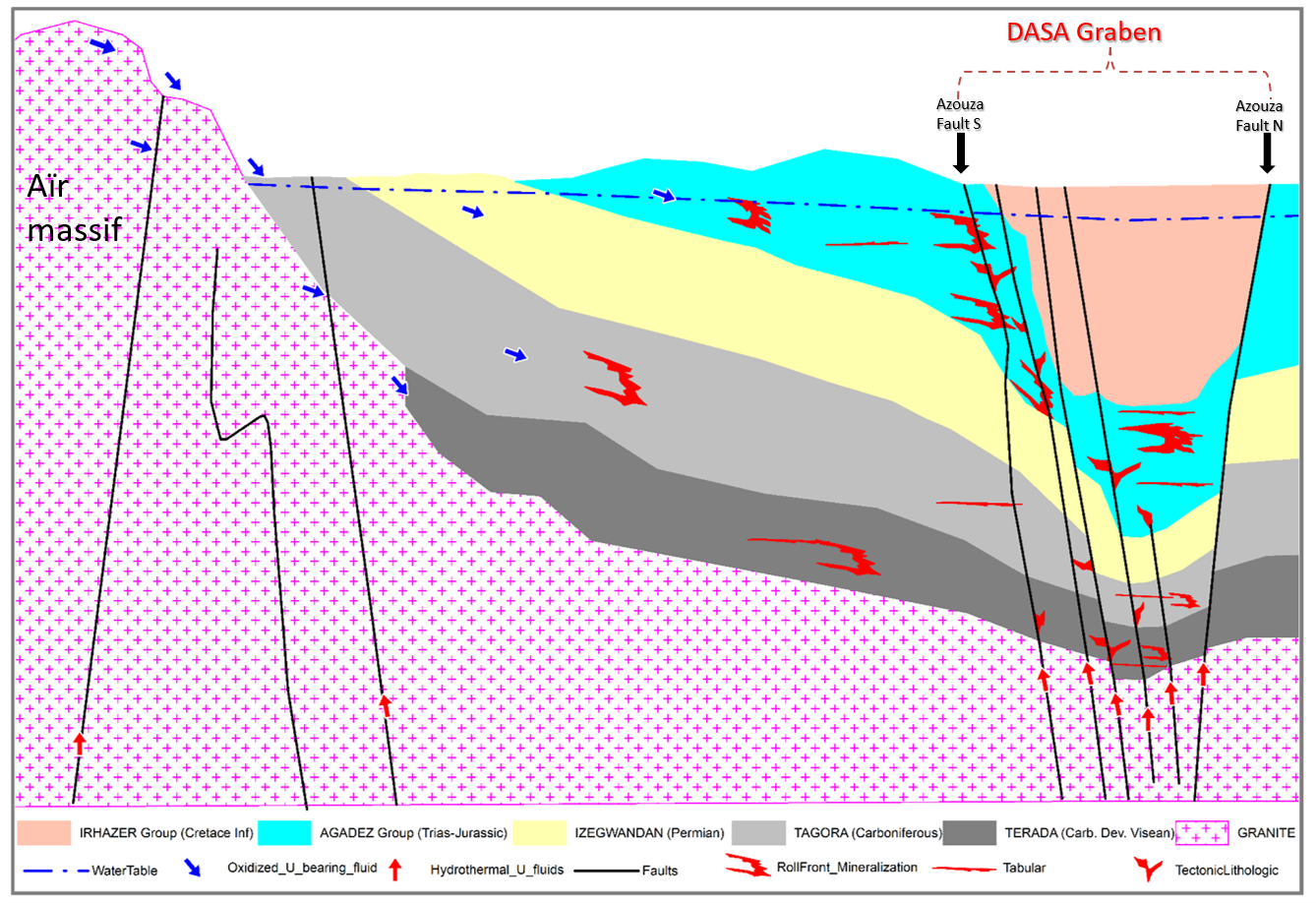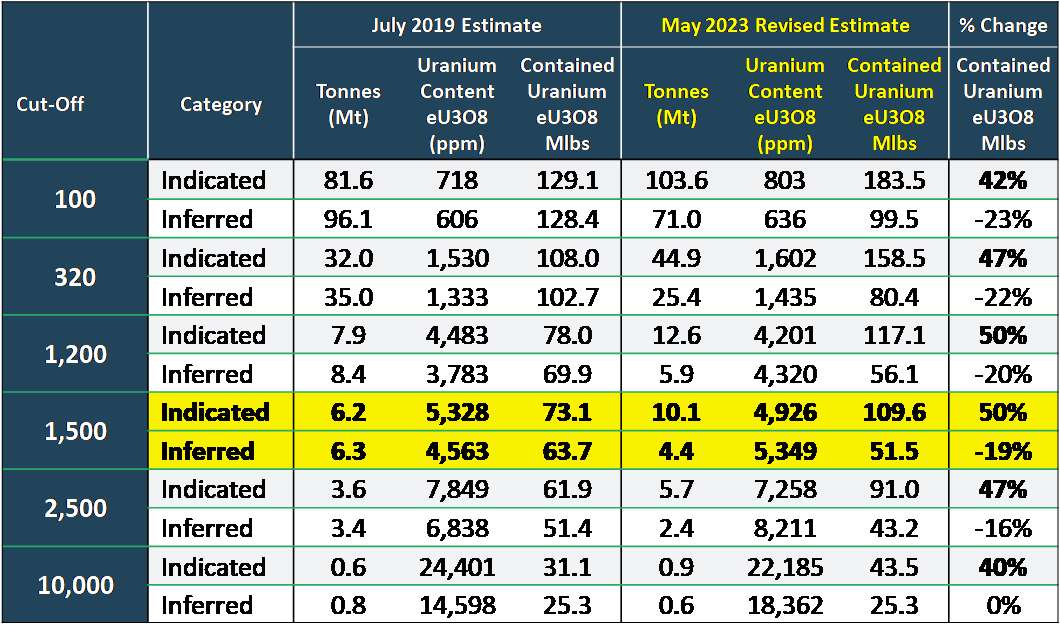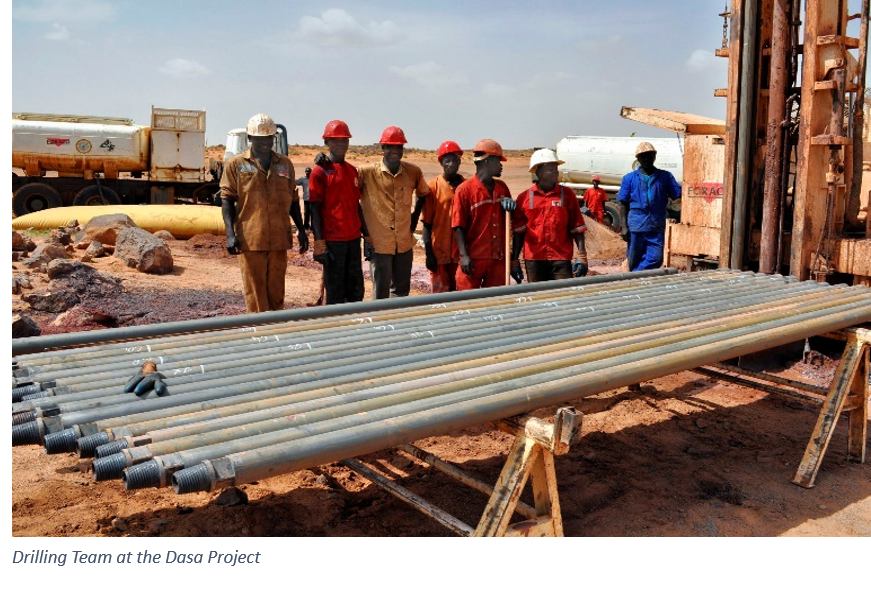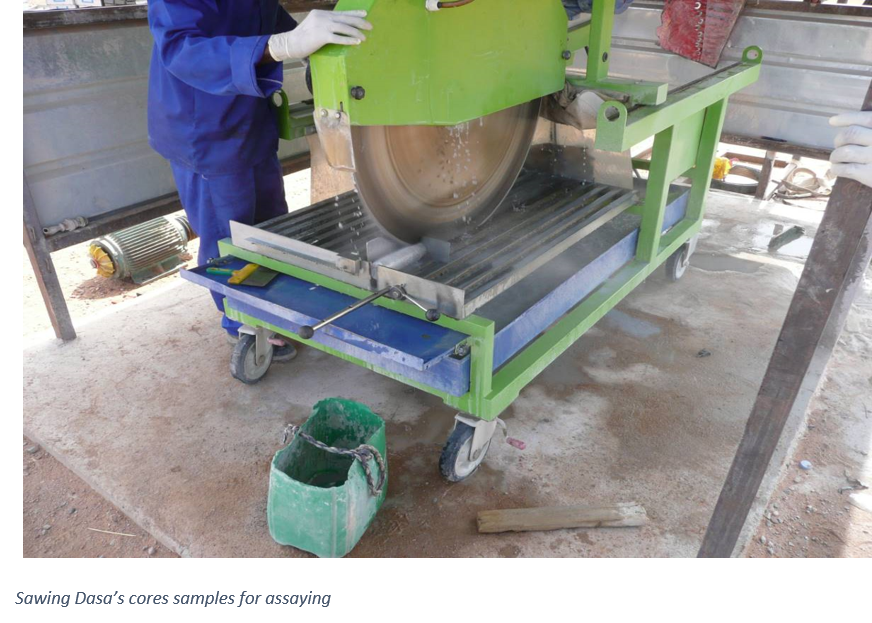Exploration
Uranium Mineralization: A Geologic Overview
The Dasa deposit, nestled within the Aïr region, presents a fascinating geological marvel, characterized by its unique sedimentary formations that have evolved from the Cambrian to the Cretaceous periods. This region is particularly renowned for its exceptionally high uranium concentrations, most prominently along its western edge, where the geological conditions are most favorable. The deposit’s richness in uranium can be attributed to a series of intricate natural processes: oxygen-rich fluids percolating through the ancient bedrock of the Aïr area interact with and leach uranium, which then becomes entrapped within the younger sediment layers dating from the Carboniferous to the Triassic-Jurassic periods. These layers form distinct uranium-rich channels, a testament to the dynamic geological history of the area.
During the Jurassic period, significant volcanic activities further enriched the Dasa deposit with uranium, creating layers of volcanic materials and sandstone. These layers, along with the area’s structural features like faults, have formed highly concentrated uranium zones, ideal for mining.
The Dasa deposit extends from depths of 80 meters to 600 meters below the surface. The 2023 Mineral Resource Estimate (MRE) reports a combined Indicated and Inferred Resource of 283 million pounds eU3O8, using a cut-off grade of 100 ppm.
Uranium Mineralization: A Geologic Overview
2007: Global Atomic Fuels Corporation signs 6 Exploration Permits and discovers the Tin Negouran, Dajy and Isakanan deposits.
2010: Discovery of a high grade uranium outcrop near the Dajy deposit within the Tchirezrine 2 sandstone, (Dajy Area Surface Anomaly – “DASA” ) leads to discovery of this important new uranium deposit during 2011.
2018: Detection of high-grade uranium on the flank of the Dasa graben structure, later named the “Flank Zone”, confirmed that all Agadez group sandstones (Jurassic-Triassic) are mineralized.
2019: Based on the completion of over 150,000 meters of drilling, the initial Mineral Resource Estimate (“MRE”) for Dasa was filed, identifying Dasa as the highest grade uranium deposit in Africa. At 1,500 ppm cut-off, Indicated Resource stands at 73.1 million pounds of eU3O8 with a grade of 5,328 ppm; and the Inferred Resource at 63.7 million pounds of eU3O8 with a grade of 4,563 ppm.
2021-2022: A 16,000-meter drilling program focused on infill drilling to upgrade Inferred Resources.
2023: A new MRE was calculated highlighting a 50% increase in Indicated Resources, from 73.1 to 109.6 million pounds (at 1,500 ppm cut-off), showing an excellent conversion factor from Inferred, and driving the necessity for a new Mine Plan for Phase 1.
More drilling is planned in the years ahead to convert Inferred Resources to the Indicated category and explore beyond the known mineable Reserves. The deposit remains open at depth and along strike.






